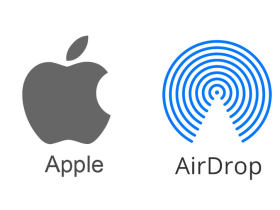Ethereum is a decentralized, open-source blockchain platform that enables developers to build and deploy smart contracts and decentralized applications (dApps). It runs on a global network of nodes, making it highly secure and resistant to censorship. Ethereum introduced the concept of programmable money, allowing users to interact with the blockchain through self-executing contracts, also known as smart contracts. Ethereum’s native currency, Ether (ETH), powers these contracts and facilitates transactions on the network.
What is ETH and why does it have value?
ETH, or Ether, is the native cryptocurrency of the Ethereum platform. It is used to pay for transaction fees and computational services on the network. ETH also serves as a digital store of value due to its decreasing issuance rate, as collateral for crypto loans, and as a payment system in various financial apps built on Ethereum. Many people also view ETH as an investment, similar to Bitcoin and other cryptocurrencies.
What is Ethereum used for?
Ethereum’s primary use is for executing smart contracts, which enable various applications, such as decentralized finance (DeFi), stablecoins, non-fungible tokens (NFTs), and decentralized autonomous organizations (DAOs). These applications are built on top of the Ethereum platform, providing a wide range of financial services, digital asset management, and even tokenization of real-world assets like real estate and art. The platform is also home to thousands of tokens, each with its unique use case and value and hosts internet communities governed by token holders, further expanding the potential of decentralized organizations.
What are Ethereum tokens?
Tokens are digital assets created and traded on the Ethereum platform. They represent a wide range of use cases, including stablecoins that mirror the value of traditional currencies, governance tokens representing voting power in decentralized organizations, collectible tokens (NFTs) for digital art or unique assets, and various utility tokens with specific functions within their respective ecosystems. Ethereum is home to thousands of tokens, with developers constantly building new tokens that unlock new possibilities and open new markets.
What are smart contracts?
Smart contracts are self-executing computer programs that live on the Ethereum blockchain. They are triggered by transactions from users or other contracts and enable complex applications and interactions on the platform. Smart contracts form the basis of decentralized apps (dApps) and are immutable, meaning they cannot be altered once deployed. They provide transparency, security, and automation, and are used in various applications like lending platforms, decentralized exchanges, insurance, crowdfunding, and more.
Who created it?
Ethereum was proposed by Vitalik Buterin in 2013 and officially launched in 2015, following a successful crowdfunding campaign. It has since been developed and maintained by the Ethereum community, consisting of developers, researchers, and enthusiasts worldwide.
What was The Merge and why was it important?
The Merge was a significant upgrade to the Ethereum network, transitioning it from a proof-of-work (PoW) to a proof-of-stake (PoS) consensus mechanism. This event marked the joining of the original execution layer (Ethereum Mainnet) with its new PoS consensus layer, the Beacon Chain. The Merge played a crucial role in Ethereum’s development for several reasons:
- Energy Efficiency: The Merge reduced Ethereum’s energy consumption by approximately 99.95%, making it a more sustainable and environmentally friendly blockchain platform.
- Enhanced Security: By adopting the PoS consensus mechanism, Ethereum’s security was strengthened as it became less vulnerable to potential attacks, such as the 51% attack, which is more common in PoW networks.
- Scalability: The Merge laid the foundation for future upgrades aimed at increasing the scalability of the Ethereum network, allowing it to handle more transactions and support a larger user base.
- Decentralization: The switch to PoS incentivized more participants to join the network as validators, further decentralizing the Ethereum ecosystem and reducing the risk of centralization that can occur in PoW mining.
- Continued Evolution: The Merge represented a major milestone in Ethereum’s ongoing development, showcasing the project’s adaptability and commitment to growth, innovation, and improvement.













1 Comment